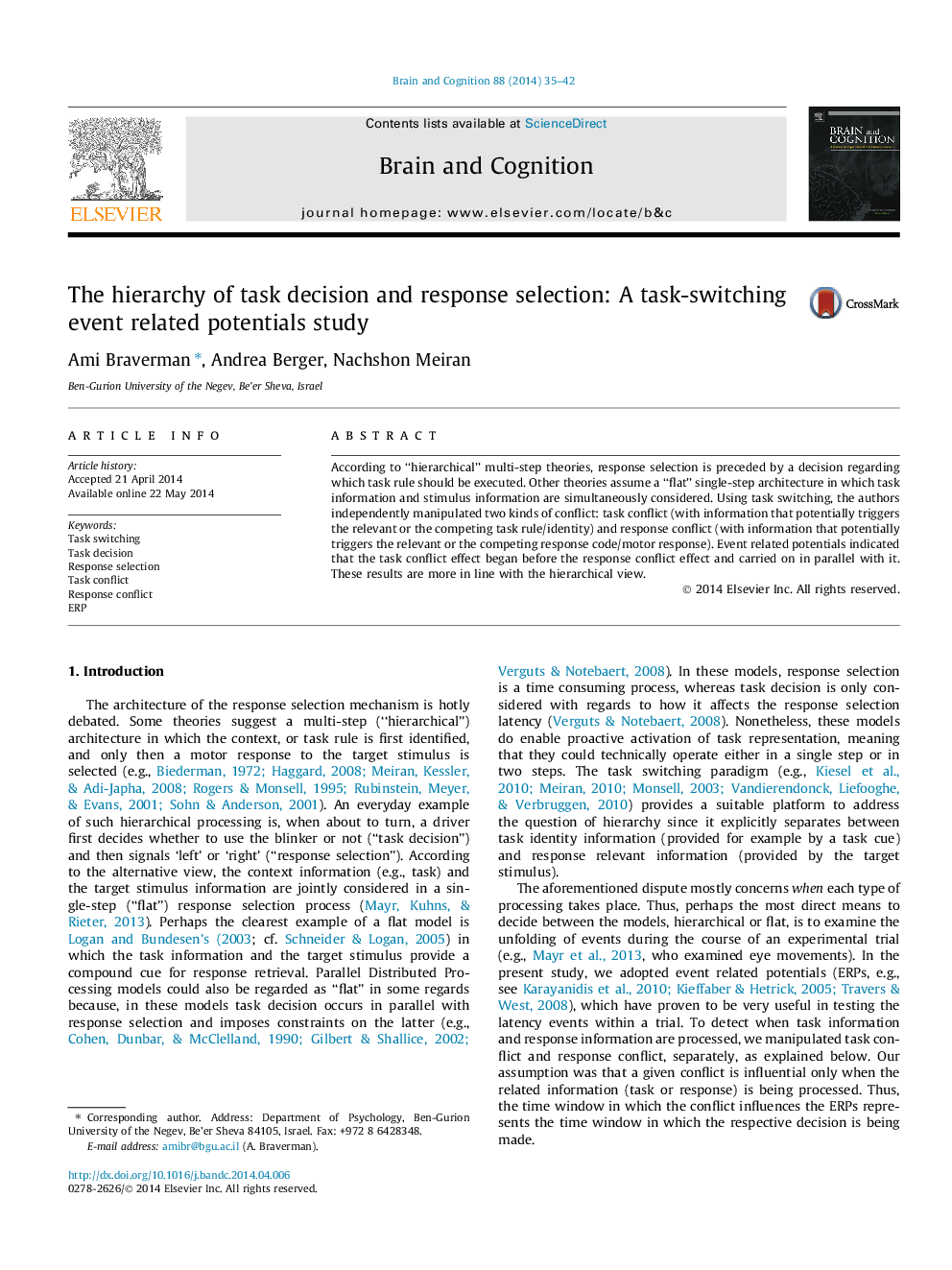| Article ID | Journal | Published Year | Pages | File Type |
|---|---|---|---|---|
| 924511 | Brain and Cognition | 2014 | 8 Pages |
•We manipulated task and response conflict separately in a task switching paradigm.•We measured event related potentials and compared the latencies of the effects.•Task conflict took effect first and effects of both conflicts persisted through the trial.•Task and response conflict were associated with different scalp distributions.
According to “hierarchical” multi-step theories, response selection is preceded by a decision regarding which task rule should be executed. Other theories assume a “flat” single-step architecture in which task information and stimulus information are simultaneously considered. Using task switching, the authors independently manipulated two kinds of conflict: task conflict (with information that potentially triggers the relevant or the competing task rule/identity) and response conflict (with information that potentially triggers the relevant or the competing response code/motor response). Event related potentials indicated that the task conflict effect began before the response conflict effect and carried on in parallel with it. These results are more in line with the hierarchical view.
